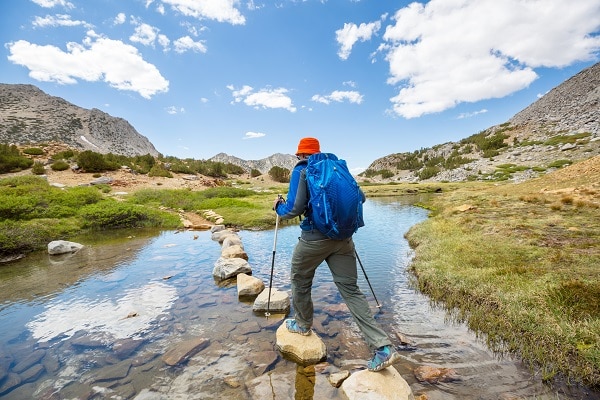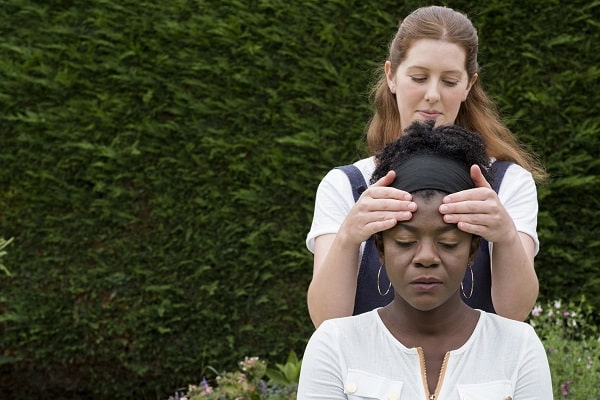Outdoor therapy, also known as ecotherapy or nature therapy, is a growing trend in the mental health field. It involves incorporating nature and the great outdoors into the therapeutic process, offering a fresh and invigorating perspective on healing. This article will guide you through the process of incorporating outdoor therapy into your life and provide valuable insights into how this practice can enhance your mental, emotional, and physical well-being.
Contents
Embracing The Healing Power Of Outdoor Therapy
Engaging in therapy outdoors can provide many mental and physical health benefits. Research has shown that exposure to nature can reduce stress, anxiety, and depression while promoting relaxation, creativity, and a sense of connection with the world around you. Furthermore, the physical activity often involved in outdoor therapy, such as hiking, gardening, or simply walking, can improve cardiovascular health, increase energy levels, and a stronger immune system.
Being in nature can foster a sense of mindfulness and help you feel more grounded, allowing you to better focus on your thoughts and feelings during therapy sessions. The natural environment also enhances the therapeutic process, offering a soothing and calming backdrop for self-reflection and exploration of emotions. The great outdoors’ sights, sounds, and smells can also serve as powerful stimuli for memory and personal growth, making outdoor therapy a holistic approach to healing.
Key Principles For Successful Outdoor Therapy

Safety and comfort are essential to any therapeutic process, and outdoor therapy is no exception. It is crucial to ensure you are well-prepared for the outdoor environment, wear appropriate clothing and footwear for the weather and terrain, and bring any necessary supplies such as sunscreen, insect repellent, or a water bottle. Additionally, inform someone of your whereabouts and plans, especially if you are venturing into a remote area or engaging in a more adventurous outdoor activity.
Choosing the right location and time for outdoor therapy sessions can greatly impact your experience. Select a setting that resonates with you and provides the desired level of privacy, whether a quiet park, a serene beach, or a lush forest. Consider the time of day that feels most suitable for your needs, considering factors such as temperature, sunlight, and the presence of other people. By carefully planning the logistics of your outdoor therapy, you can create a nurturing and supportive environment for personal growth and healing.
Nature-Based Activities for Outdoor Therapy

Countless nature-based activities can be incorporated into your outdoor therapy sessions. Some people find solace in walking or hiking through natural settings, while others may prefer more immersive activities such as gardening, bird-watching, or even outdoor yoga or meditation. These activities help you connect with the natural world while providing opportunities for self-reflection and introspection.
Another effective approach to outdoor therapy is the practice of “forest bathing,” which originated in Japan and is known as shinrin-yoku. This practice involves immersing oneself in a forest environment and engaging all five senses to fully absorb the healing properties of nature. Forest bathing can lower stress levels, improve mood, and boost the immune system. By experimenting with different nature-based activities, you can find the ones that resonate most with your therapeutic journey.
Integrating Outdoor Therapy with Traditional Therapeutic Techniques

Outdoor therapy can be combined with traditional therapeutic techniques, creating a unique and powerful approach to healing. For example, cognitive-behavioral therapy (CBT) techniques can be adapted outdoors, helping you challenge and reframe negative thoughts while immersed in the calming presence of nature. Similarly, the natural environment can enhance mindfulness practices and meditation, promoting a deeper sense of relaxation and present-moment awareness.
Working with a therapist experienced in outdoor therapy can facilitate the integration of these techniques with your outdoor sessions. They can help you navigate the process of combining the benefits of nature with evidence-based therapeutic approaches, creating a customized plan that addresses your specific needs and goals. In this way, outdoor therapy can complement and enhance traditional therapy, offering a holistic and well-rounded path toward healing and personal growth.
Finding A Qualified Outdoor Therapist

Look for therapists with specialized training or experience in outdoor, ecotherapy, or nature-based interventions. Additionally, consider their therapeutic approach and style, ensuring that it aligns with your needs and preferences. Working with a qualified outdoor therapist can greatly enhance your experience and provide professional guidance as you incorporate nature into your therapy sessions.
You can ask for recommendations from friends, family, or healthcare professionals to find a qualified outdoor therapist. You can also search online directories of therapists who specialize in outdoor therapy, such as the Association for Nature and Forest Therapy or the International Association of Ecotherapy. Investing time in finding the right therapist can create a strong foundation for a successful and transformative outdoor therapy experience.
Outdoor Therapy For Children And Adolescents

Outdoor therapy can be particularly beneficial for children and adolescents, who often have a natural affinity for the outdoors and can greatly benefit from the therapeutic effects of nature. Engaging in outdoor therapy can help young people develop coping skills, enhance self-esteem, and foster a sense of resilience and independence. Activities such as nature-based play, outdoor art projects, or animal-assisted therapy can provide children and adolescents with age-appropriate and engaging therapeutic experiences.
When seeking outdoor therapy for young people, it is important to find a therapist who specializes in working with children and adolescents and is experienced in adapting outdoor therapy techniques to suit their developmental needs. This can create a supportive and nurturing environment for young people to explore their emotions and experiences while connecting with the natural world.
Group Outdoor Therapy Sessions

Group outdoor therapy sessions can provide a unique opportunity for individuals to connect with others who share similar experiences or struggles. Engaging in therapeutic activities in a natural setting with a group of peers can foster a sense of camaraderie and support, promoting interpersonal growth and the development of healthy coping skills. Examples of group outdoor therapy sessions include nature-based support groups, wilderness therapy programs, or outdoor adventure therapy experiences.
When considering outdoor group therapy, it is important to research the specific program or group to ensure it aligns with your personal needs and goals. Look for experienced facilitators or therapists who specialize in group work and understand the dynamics of group therapy in an outdoor setting. By participating in outdoor group therapy, you can expand your support network and enhance your healing journey through shared experiences in nature.
The Bottom Line
Incorporating outdoor therapy into your life can offer a powerful and transformative approach to healing and personal growth. By embracing the healing power of nature and integrating outdoor therapy with traditional therapeutic techniques, you can create a holistic and well-rounded path toward improved mental, emotional, and physical well-being. Overcoming barriers and finding the right therapist or group setting can ensure a successful and meaningful outdoor therapy experience.
As you embark on your outdoor therapy journey, remember that the key is to remain open to the natural world’s possibilities and explore various activities and settings to find what resonates most with you. By taking the first step towards incorporating outdoor therapy into your life, you are opening the door to a world of healing, self-discovery, and a deeper connection with the world around you.


